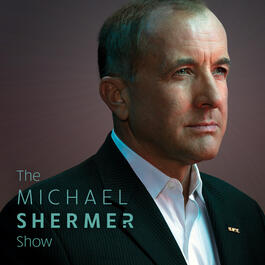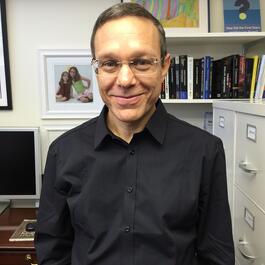
Evidence of Aliens? Harvard Astronomer Avi Loeb
Did Harvard astronomer Avi Loeb discover the remnants of an interstellar meteor in the form of spherules on the ocean floor? Could they be of alien origin? In today's special edition of The Michael Shermer Show the guest, Harvard astrophysicist Dr. Avi Loeb announces that he has discovered material from a large interstellar object from the bottom of the Pacific Ocean near Papua New Guinea in an expedition he led over the summer. The object, which he labels IM1—Interstellar Meteor 1—collided with Earth nearly a decade ago and was tracked by U.S. government satellites, which gave Loeb and his team coordinates of where to look. Most of the meteor burned up in the atmosphere but tiny spherules remained on the ocean bottom, which Loeb retrieved and had analyzed in labs at Harvard, UC Berkeley, and the Broker Corporation. These spherules are tiny—smaller than a grain of sand—and there are literally trillions of them around the world of both terrestrial and extraterrestrial origin, so whether or not these particular spherules are Interstellar in origin remains to be seen, despite Loeb's confidence that they are. Here is what he announced today in a press release: The Interstellar Expedition of June 2023–led by the expedition's Chief Scientist, Harvard University Astrophysicist Avi Loeb and coordinated by Expedition Leader Rob McCallum of EYOS Expeditions retrieved hundreds of metallic spheres thought to be unmatched to any existing alloys in our solar system from the seafloor in the Pacific Ocean near Papua New Guinea. Early analysis shows that some spherules from the meteor path contain extremely high abundances of Beryllium, Lanthanum and Uranium, labeled as a never-seen-before "BeLaU" composition. These spherules also exhibit iron isotope ratios unlike those found on Earth, the Moon and Mars, altogether implying an interstellar origin. The loss of volatile elements is consistent with IM1's airburst in the Earth's atmosphere. "The "BeLaU" composition is tantalizingly different by factors of hundreds from solar system materials, with beryllium production through spallation of heavier nuclei by cosmic-rays flagging interstellar travel," says Avi Loeb. The press release of August 29, 2023 was timed with the publication date of Dr. Loeb's new book, Interstellar, whose subtitle hints at the scientist's larger ambitions: The Search for Extraterrestrial Life and Our Future in the Stars. Dr. Loeb's co-authored paper has not been peer reviewed. In fact, none of the world's leading experts on spherules from space have even seen any of Dr. Loeb's evidence. So in preparation for this episode, I contacted Peter Brown, an astronomer at Western University, Ontario, who specializes in the physics of meteors, and he directed me to the five leading experts in the world on spherules. These include: George Flynn, SUNY, Plattsburgh; Don Brownlee, University of Washington; John Bradley, University of Hawaii; Michael Zolensky, NASA; and Matthew Genge, Imperial College, London. I also consulted Steven Desch, from Arizona State University, as he has been quoted elsewhere as a critic of Avi Loeb's research. All expressed their skepticism about Dr. Loeb's findings, which I read on air to Avi to get his response. (See the show notes for this episode on skeptic.com.) Listen to the experts and Dr. Loeb's response to their skepticism in this episode. (Note: Steven Desch's initial statement, included in the show notes, was so negative that I chose not to read it on air, but include it in the show notes on skeptic.com for full disclosure of what he thinks about this research. I also included Dr. Desch's additional comments on why many scientists are skeptical of the U.S. government data on the meteor's trajectory and impact site.) I should note that I am a member of the Galileo Project team, which organized this expedition, and I consider Avi a friend and colleague who always welcomes my skepticism in our weekly team meetings. To that end let me emphasize that he is not claiming to have discovered alien technology, only the remnants of an interstellar object. Unfortunately, the media coverage surrounding the Galileo Project in general and this expedition in particular is only interested in whether or not we have made contact with ET. We have not, and Avi is not claiming that we have. No matter the scientific find is, the media reports it as aliens, aliens, and aliens. Alas. My own view is that aliens are very likely out there somewhere—given the astronomical numbers of hundreds of billions of galaxies, each of which has hundreds of billions of stars, each of which has planets it seems highly unlikely that we're alone in the cosmos—but that they have very likely not come here in any shape or form—nonhuman biologics or extraterrestrial metalogics (my own neologism echoing government whistleblower David Grusch's ridiculous description of alien pilots as "nonhuman biologics" in his Congressional testimony). The universe is vast and consists of mostly empty space. The odds are very long indeed that anyone could find us, much less leave traces for us to evaluate. But in keeping with Cromwell's Rule in Bayesian reasoning (never assign a 0 or 1 probability to anything because, as Oliver Cromwell famously said, "I beseech you in the bowels of Christ you might be mistaken"), we should keep an open mind and keep looking. That is why I support the SETI program and am on the Galileo Project team. The odds are long but the payoff would be spectacular if we ever did discover extraterrestrial intelligence or the technological artifacts of an extraterrestrial civilization. Abraham (Avi) Loeb is the Frank B. Baird, Jr., Professor of Science at Harvard University, the longest-serving chair of Harvard's Department of Astronomy, the founding director of Harvard's Black Hole Initiative, and the current director of the Institute for Theory and Computation (ITC) within the Harvard-Smithsonian Center for Astrophysics. He also heads the Galileo Project, chairs the Advisory Committee for the Breakthrough Starshot Initiative, and is former chair of the Board on Physics and Astronomy of the National Academies. Author of eight books and more than a thousand scientific papers, Loeb is an elected fellow of the American Academy of Arts and Sciences, the American Physical Society, and the International Academy of Astronautics. In 2012, Time selected Loeb as one of the 25 most influential people in space. He lives near Boston, Massachusetts.
From "The Michael Shermer Show"




Comments
Add comment Feedback